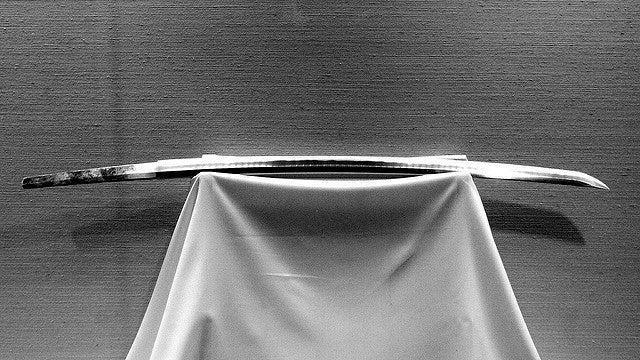Ihr Warenkorb ist leer


The katana is perhaps the single most recognizable sword in the world. Invented in feudal Japan, it features a sleek design that's characterized by a curved, single-edged blade. In recent years, however, many companies have begun to manufacture and sell katana replicas. Although they look like authentic traditional katanas, they lack the quality and attention to detail of their genuine counterparts. So, how do you spot the difference between an authentic traditional katana and a replica?
#1) Signature
During feudal Japan, bladesmiths would carve their signature into the side of the katana's tang (nakago). Normally, samurai warriors would wear the katana with the signature facing away from their body. The purpose of the signature was to reveal who exactly made the katana, thus promoting the bladesmiths skills and abilities. Modern katanas manufactured within the past 50 decades typically lack the bladesmith's signature.
#2) Long Grip
Traditional Japanese katanas also featured a long grip so that samurai warriors could wield it using both hands. While other swords were designed for one-hand usage, the katana was designed for two-hand usage. This allowed samurai warriors to perform stronger, more forceful strikes. To accommodate two-hand usage, however, bladesmiths would design the katana with a long grip, also known as a tsuka.
#3) 23-Inch Blade
Measuring the blade can often reveal whether a katana is authentic. Traditionally, Japanese bladesmiths designed the katana with a relatively long blade measuring about 23.5 inches (60 cm). Spanning almost 2 feet, the katana's blade was long enough so that samurai warriors could engage their opponents from a safe distance. However, it was still short enough to make the katana easy to handle and maneuver.
#4) High-Quality Steel
One of the most telltale feature of a genuine traditional Japanese katana is the use of a high-quality steel. It wasn't just the katana's curved, single-edged blade that made it a formidable weapon. It was the katana's high-quality steel. Known as tamahagane steel, it features a high carbon content to achieve a superior level of strength. Replica katanas mass-produced today feature a lower-quality steel that lacks the strength of tamahagane steel.
#5) Razor-Sharp Edge
You'll probably discover that many mass-produced katana replicas feature a blunt or semi-blunt edge. This is due to the fact that they are designed for actual use. Rather, they are used as display models for decorative purposes. Genuine traditional Japanese katanas, on the hand, are designed with a razor-sharp edge.